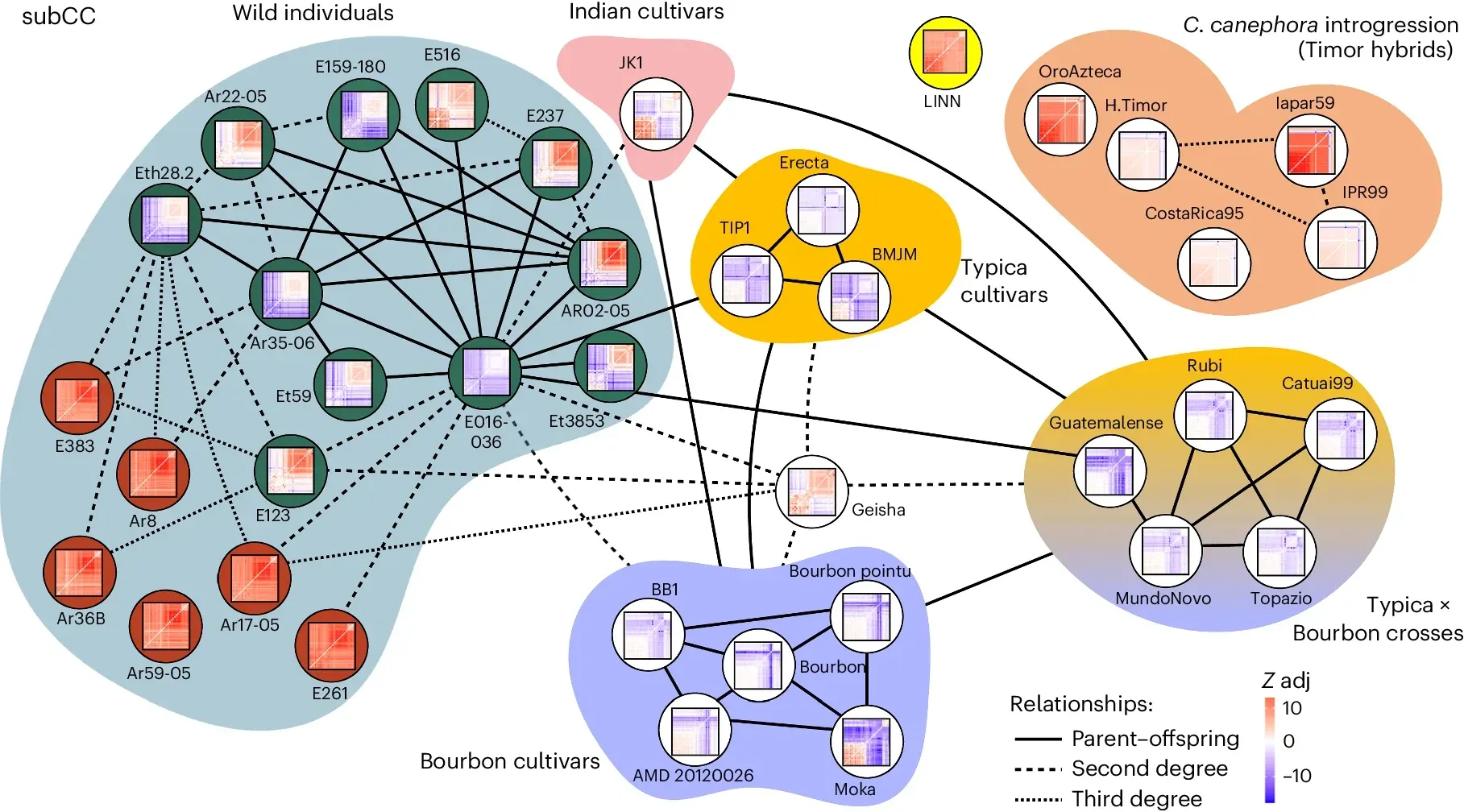The evolutionary history of coffee is probably more complicated than you think
That dark and delicious brew billowing clouds of irresistible coffee incense next to you is most likely the product of Coffea arabica.

60% of the coffee beans that make it into our mugs are ‘Arabica.’
But Arabica itself is a hybrid of two other coffee species: C. canephora and C. eugenioides.
Things get weird here, though, because plant genomes do crazy things during hybridization.
In the case of Arabica, it becomes polyploid, which is the result of whole genome duplication.
Arabica’s parents have two sets of chromosomes and Arabica is the proud owner of 4 sets.
It’s allotetraploid!
Which just means that it’s made up of genomes from two different species.
And this divine combination is thought to have occurred hundreds of thousands of years ago in Ethiopia.
But it was first discovered in 850 CE by a goat herder in Yemen (hence the name) who noticed that whenever his little bleaters nibbled on Arabica’s berries they became exceptionally energetic.
According to the legend, he reported this to a local monk who turned the berries into a drink!
We now produce about 25 billion pounds of coffee every year which has made it one of the most popular beverages in the world.
It has also made it one of the most important crops!
While Arabica is a natural hybrid, it has also been subjected to human selection pressures with ‘cultivars’ or varieties of Arabica being established throughout the tropics as a result of smuggling plants to places like India, Reunion Island, Timor, Asia, and the Caribbean.
We have a decent idea of how these plants made it to all of these places, but until the invention of advanced genome sequencing technologies we had little understanding of how each of these were related or how their genetics accounted for their differing traits.
Unfortunately, modern Arabica varieties exhibit low genetic diversity and are vulnerable to pests and diseases such as coffee leaf rust.
To clear up some of these questions and aid in future molecular breeding efforts to beef up this incredibly important crop, the author’s of today’s paper generated high quality reference genomes for C. arabica, C. canephora, and C. eugenioides.
They then sequenced an additional 46 varieties including 3 Canephora, 2 Eugenioides and 41 Arabica which were used to generate the relatedness map seen above.
Interestingly, this analysis identified candidate genes that may be responsible for the coffee rust resistance of the Timor variety, providing an opportunity to accelerate the development of disease resistant versions of the other varieties.
This work also adds important color to our understanding of Arabica’s evolutionary history and provides a genomic basis to help us to develop resilient coffee varieties that are adapted to our changing climate.
